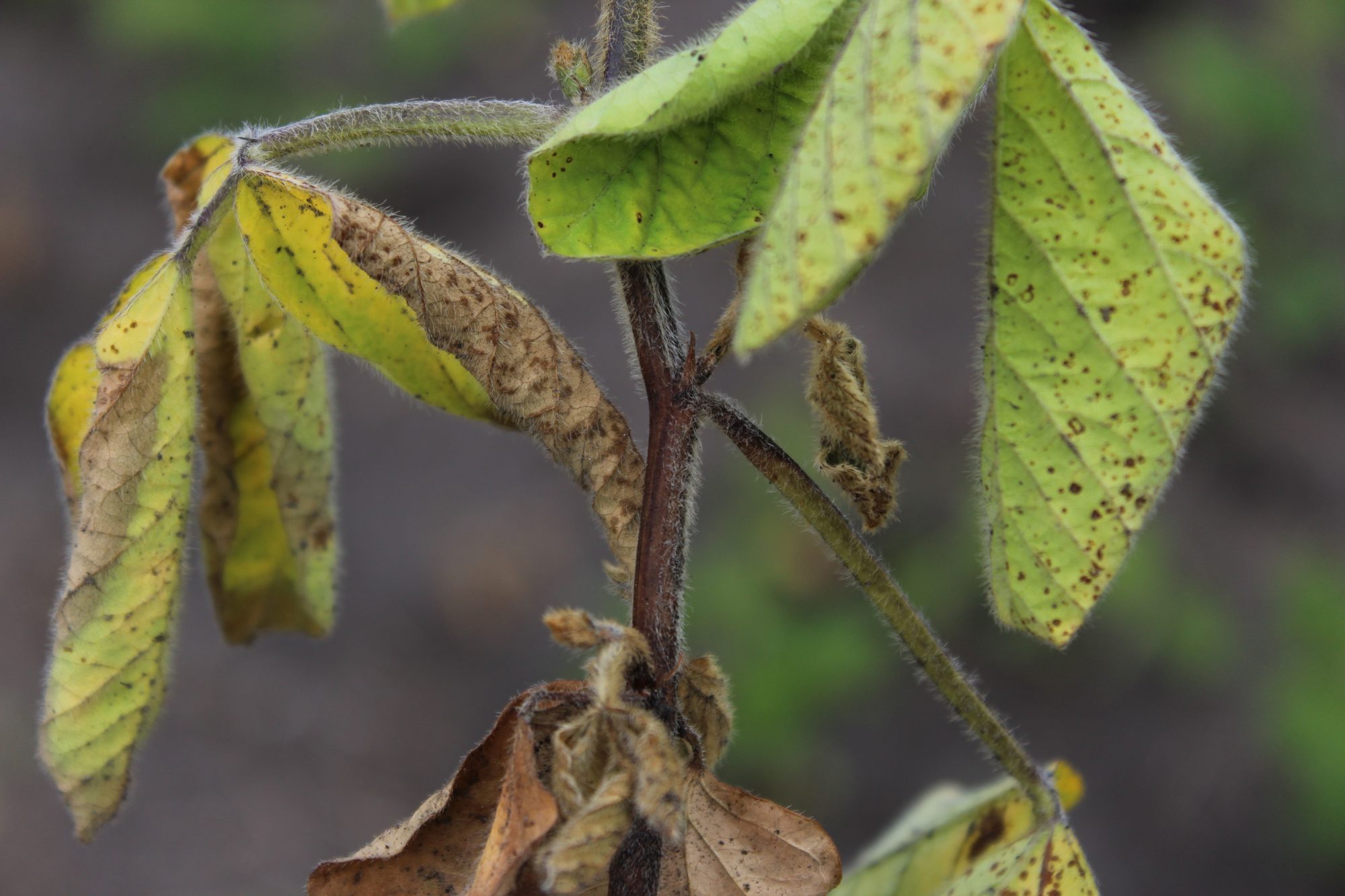Debra L. McLaren, Robert L. Conner, Yong Min Kim and Maria A. Henriquez, Agriculture and Agri-Food Canada
ROOT AND STEM rot caused by Phytophthora sojae is a devastating disease of soybean crops worldwide. Soybeans are the primary host for this pathogen, which can infect the plants any time from planting to harvest. Development of diseased plants late in the season is directly related to the level of genetic resistance present in the soybean variety. Those with high susceptibility will develop a diagnostic chocolate-brown canker at the base of the plant extending up the stem, which often occurs with extensive root rot.
In this host-pathogen system, there are major resistance genes known as Rps (Resistance Phytophthora sojae) genes.
They provide host resistance to P. sojae known as race-specific resistance, which is usually conditioned by a single gene (Rps). More than 20 different major resistance genes have been reported but only a few have been deployed in soybean cultivars. The Rps genes that have been used in soybean cultivars in Canada and the United States include Rps1a, Rps1b, Rps1c, Rps1k and to some extent Rps3a and Rps6. In Manitoba, short-season soybean varieties carrying the genes Rps1c, Rps1k and Rps3a are currently available.
As with other host-pathogen systems with a gene-for-gene interaction, there are many pathotypes or races of P. sojae. A pathotype describes a variant of a pathogen that can overcome a specific combination of Rps genes. Pathotypes are identified by inoculating a P. sojae isolate on a series of differential cultivars that each carry different Rps genes. In initial surveys of P. sojae in soybeans conducted prior to 1990 in Ontario, Canada and the United States, simple pathotypes were identified, which were able to defeat only one or two Rps genes. Over time, isolates with a greater degree of complexity began to emerge with some able to cause disease on soybean cultivars with several Rps genes, and different pathotypes have been reported within the same field. Since deployment of Rps resistance genes remains the most effective and economical means of managing P. sojae in soybean, the importance of surveys for assessing the diversity of isolates cannot be overemphasized. Surveys of Manitoba soybean fields for this disease have been conducted since 2014. In 2018, the survey continued with the collection of soil and diseased plants from soybean fields across Manitoba and the recovery of isolates of P. sojae. Research is in progress to characterize those isolates for their ability to cause disease on soybean cultivars with the common Rps genes used today and provide information on the pathotype diversity that now exists.
Partial resistance, also known as quantitative resistance, field resistance or tolerance, is a non-race specific resistance and is conferred by several minor genes. This type of resistance has become increasingly important in regions where a high level of diversity and complexity in the populations of P. sojae have overcome many of the Rps genes. Partial resistance is expressed in plants after the cotyledons and first true leaves are visible and is characterized by lower levels of root rot, disease progression at a much slower rate than occurs in susceptible cultivars and the absence of stem rot symptoms. When diverse pathotypes are present, partial resistance has been shown to provide protection. Although Rps gene resistance is expressed in the seed and therefore is effective from germination onwards, partial resistance is not. When there is a high risk of disease development, then seed treatment fungicides have increased yield in partially resistant cultivars. Significant differences between treated and non-treated seed for both moderately resistant and moderately susceptible cultivars have been reported when disease pressure is high, indicating that partial disease resistance requires the use of seed treatments for early season protection in highly favourable environments.
Utilizing host resistance is considered to be the most effective and stable means for management of this disease. If effective Rps genes are available, they will provide complete protection from seeding to harvest. There is a strong potential that newer or uncommon Rps genes can provide effective management of the pathogen, but their deployment should occur in combination with partial resistance. Since more genes are involved in the expression of partial resistance, partially resistant cultivars are more difficult to develop. However, where individual fields may harbour a large number of pathotypes, a combination of Rps gene and partial resistance provides the best protection because, to date, no single Rps gene has been shown to confer resistance to all P. sojae isolates and new virulent pathotypes of P. sojae that can overcome Rps genes continue to emerge. Current research efforts for the development of more durable management of this disease include the identification of new Rps genes as well as a better understanding of the mechanisms that contribute to the expression of quantitative disease resistance. The authors thank Manitoba Pulse & Soybean Growers and the Canadian Agricultural Partnership for their ongoing financial support of the field surveys of the pathotypes of P. sojae in Manitoba.

